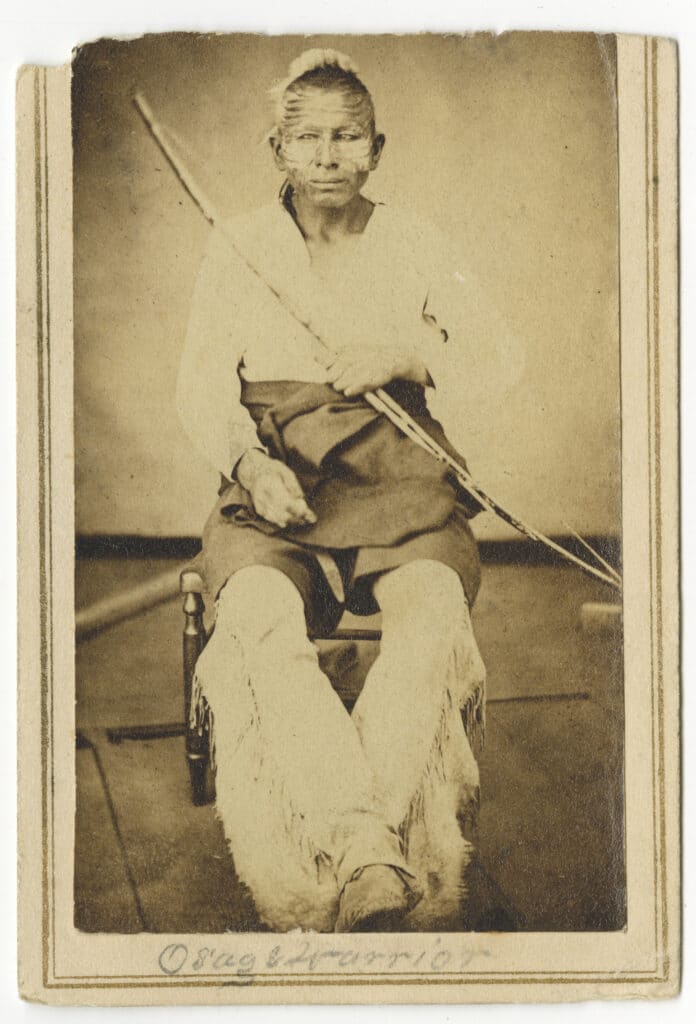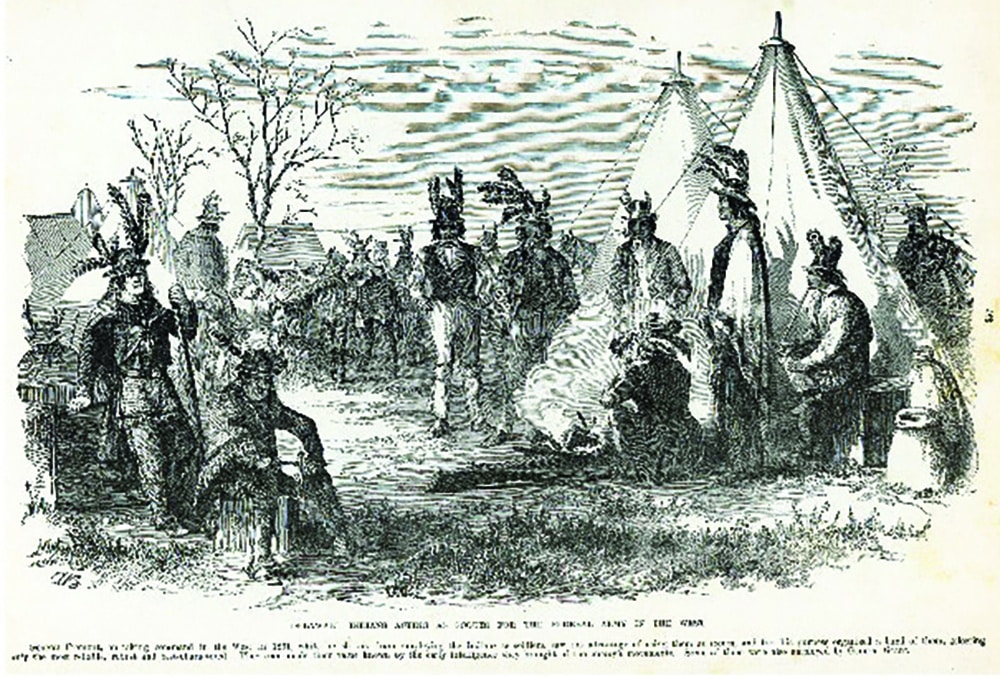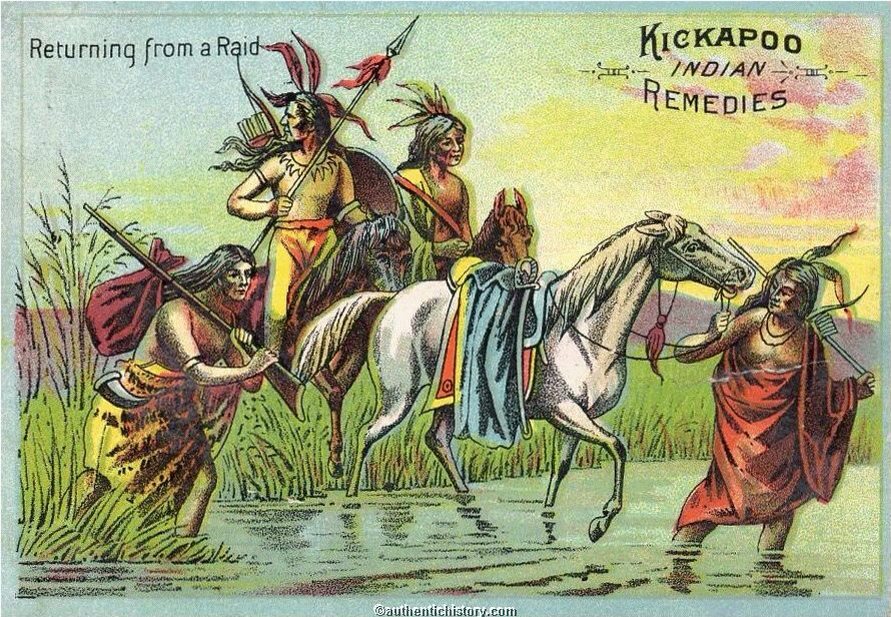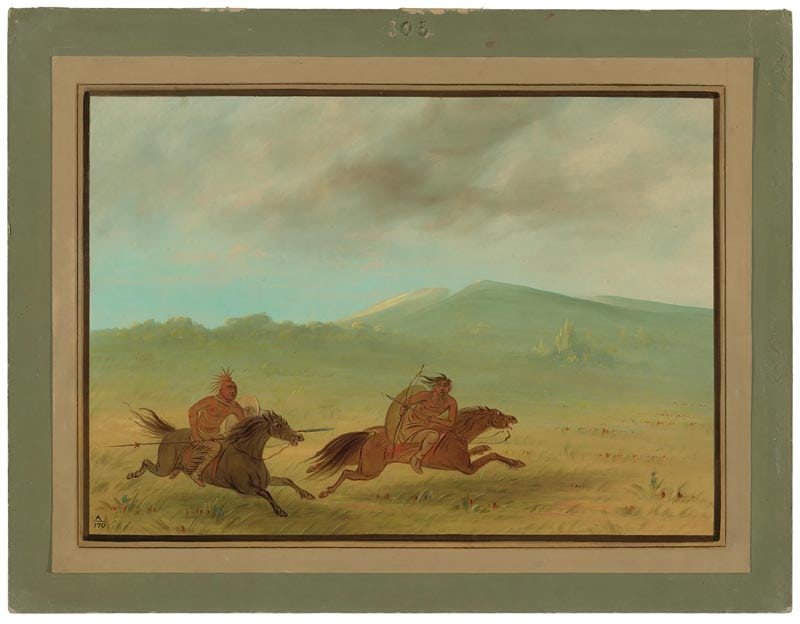Our July/August 2023 article, “In The Fight,” showed that the divisive nature of the Civil War extended to American Indian Tribes. Read about Opotheyahola, who refused to join the Confederacy, then explore our reading list to learn more.

By Michael Dickey
Opothleyahola’s Stand
The western theater of the Civil War was under the jurisdiction of the US Army’s Department of the West and divided into the districts of Missouri, Arkansas, Kansas, and Indian Territory (Oklahoma). Actions throughout the Trans-Mississippi outside Missouri’s borders often had consequences for the state. When the war commenced in April 1861, the Confederate government immediately sought to enlist allies from the Indian Territory, especially from the Five Civilized Tribes, which were especially numerous. Albert Pike, an Arkansas attorney and politician and later a general, was named Confederate Commissioner to Indian Territory and began raising several American Indian American regiments for the Confederacy.
In the southern Indian Territory, Opothleyahola, chief of the Upper Creek nation, refused Pike’s overtures to join the Confederacy. Many of the Lower Creek aligned with the Confederacy. Runaway slaves, free blacks, and pro-Union Chickasaw, Cherokee, and Seminole Indians gathered at Opothleyahola’s farm, hoping to remain neutral. On November 15, 1861, Confederate Colonel Douglas Cooper decided to convince Opothleyahola to support the Confederacy or “drive him and his party from the country.” Opothleyahola’s followers retreated toward Kansas. They were attacked three times and in December, Cooper inflicted a crushing defeat, causing the Indians to lose their supplies. Only 7,000 of an estimated 9,000 of Opothleyahola’s followers survived the battles, disease, and bitter winter blizzards. Provisions at forts in Kansas were inadequate, and eventually some of these refugees ended up in Missouri and in Union Army units.
The Leavenworth Times newspaper on Dec. 25, 1862 reported that some 900 Indian women and children had left Fort Scott, Kansas to find their husbands and fathers serving in General James Blunt’s Army in Missouri. These were mostly Creek, Cherokees and some Seminoles who had fled the Indian Territory with Opothleyahola. Destitute and helpless, this entourage of camp followers impeded the movements of Blunt’s forces. Consequently, Blunt established a camp for these refugees near his headquarters at Neosho. They agreed to remain in the camp through at least through March 1863. The paper predicted that the Indians in Blunt’s command would do “excellent scouting service this winter in cleaning out the bushwhackers who have always infested that locality.”

For Additional Reading
“Báxoje in Blue: Ioway Soldiers in the Union Army” by Greg Olson. Kansas History: A Journal of the Central Plains, Autumn 2017.
Delaware Participation in the American Civil War. David Ezzo and Michael Moskowitz, Alden, New York August 2021
“The U.S. Army, Indian Agency, and the Path to Assimilation: The First Indian Home Guards in the American Civil War” by Chris Rein, Kansas History: A Journal of the Central Plains (Spring 2013)
The American Indian in the Civil War, 1862-1865 by Annie Heloise Abel, PH.D., University of Nebraska Press, 1992
“Black Beaver: Delaware Hero of the Civil War” by Laurence M. Hauptman. Magazine of Smithsonian’s National Museum of the American Indian, Summer 2005 Vol 16. No. 2
“The U.S. Army, Indian Agency, and the Path to Assimilation: The First Indian Home Guards in the American Civil War,” by Chris Rein, Kansas History, Publication of the Kansas Historical Society, Spring 2013
The American Civil War in the Indian Territory, John D. Spencer, Osprey Publishing, Oxford UK, 2006
Between Two Fires: American Indian in the Civil War, Laurence M. Hauptman, Free Press Paperbacks, New York NY, 1995
The War of the Rebellion: a Compilation of the Official Records of the Union and Confederate Armies, Series I, Volume 13, Page 61-63, US. War Department, 1880 Online at Cornell University https://collections.library.cornell.edu/moa_new/waro.html
Missouri’s American Indians Told Stories in Winter • Missouri Life Magazine
28 Native American Sites in Missouri • Missouri Life Magazine
Related Posts
October 24, 1832
The last American Indian lands in Missouri were given up on this day. The Kickapoo Tribe surrendered over 2 million acres in Missouri for about one third that much in Kansas. They also got $18,000.
10 Books on Missouri’s Native American History
Looking for more reading on the Osage and Missouria tribes? Parts 2 and 3 of our special series are forthcoming in September and October, but in the mean time we highly recommend this selection of books that cover the subject.



